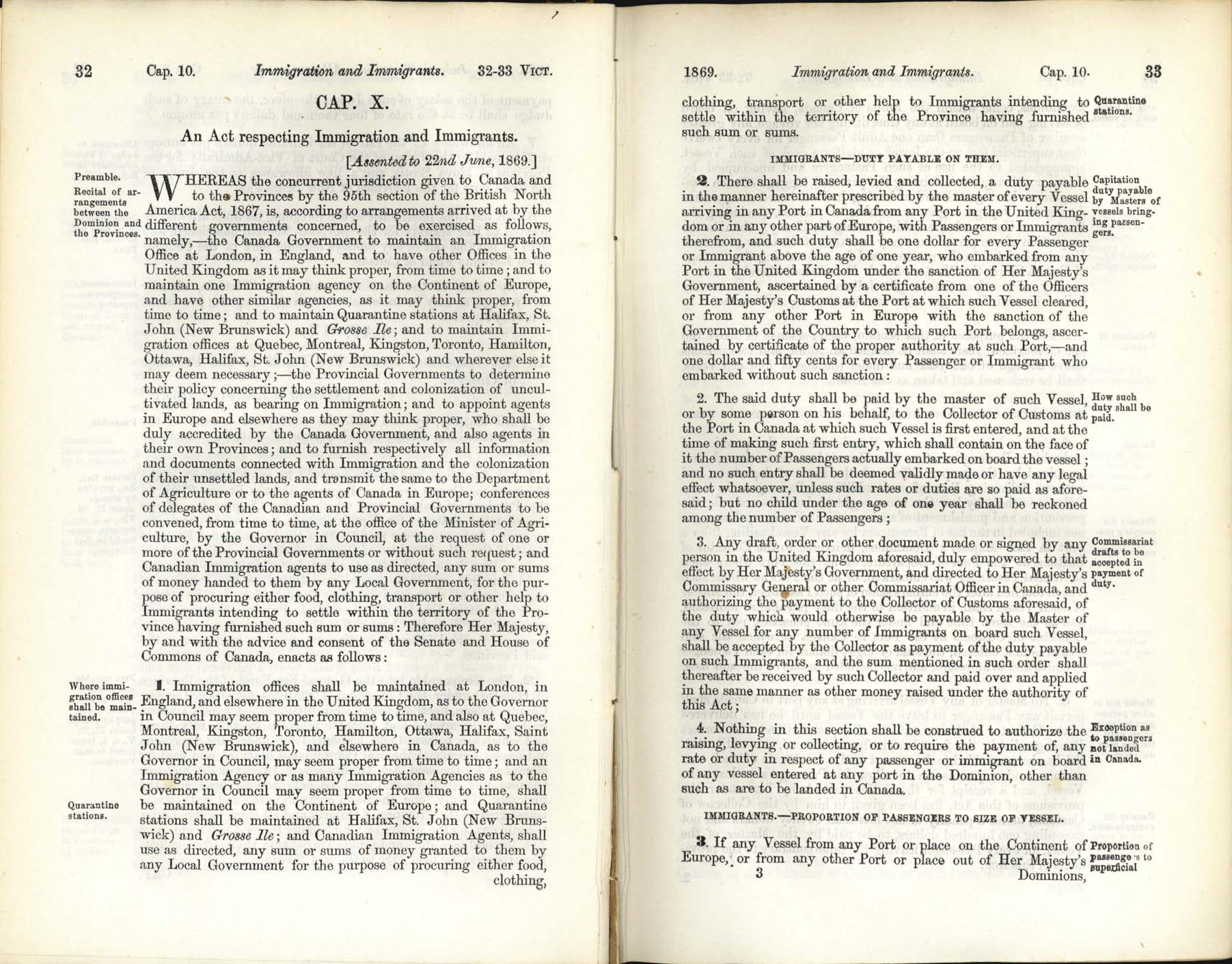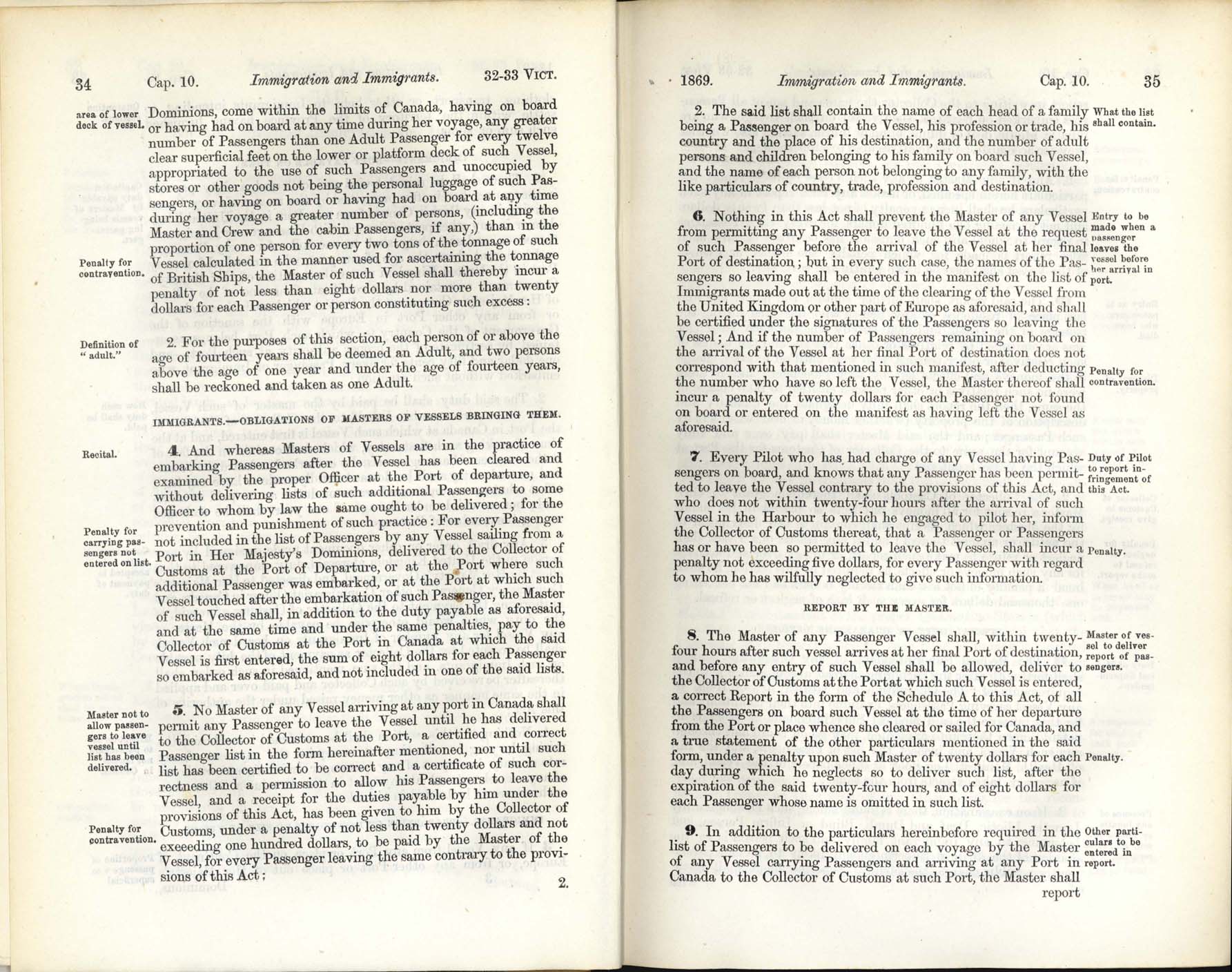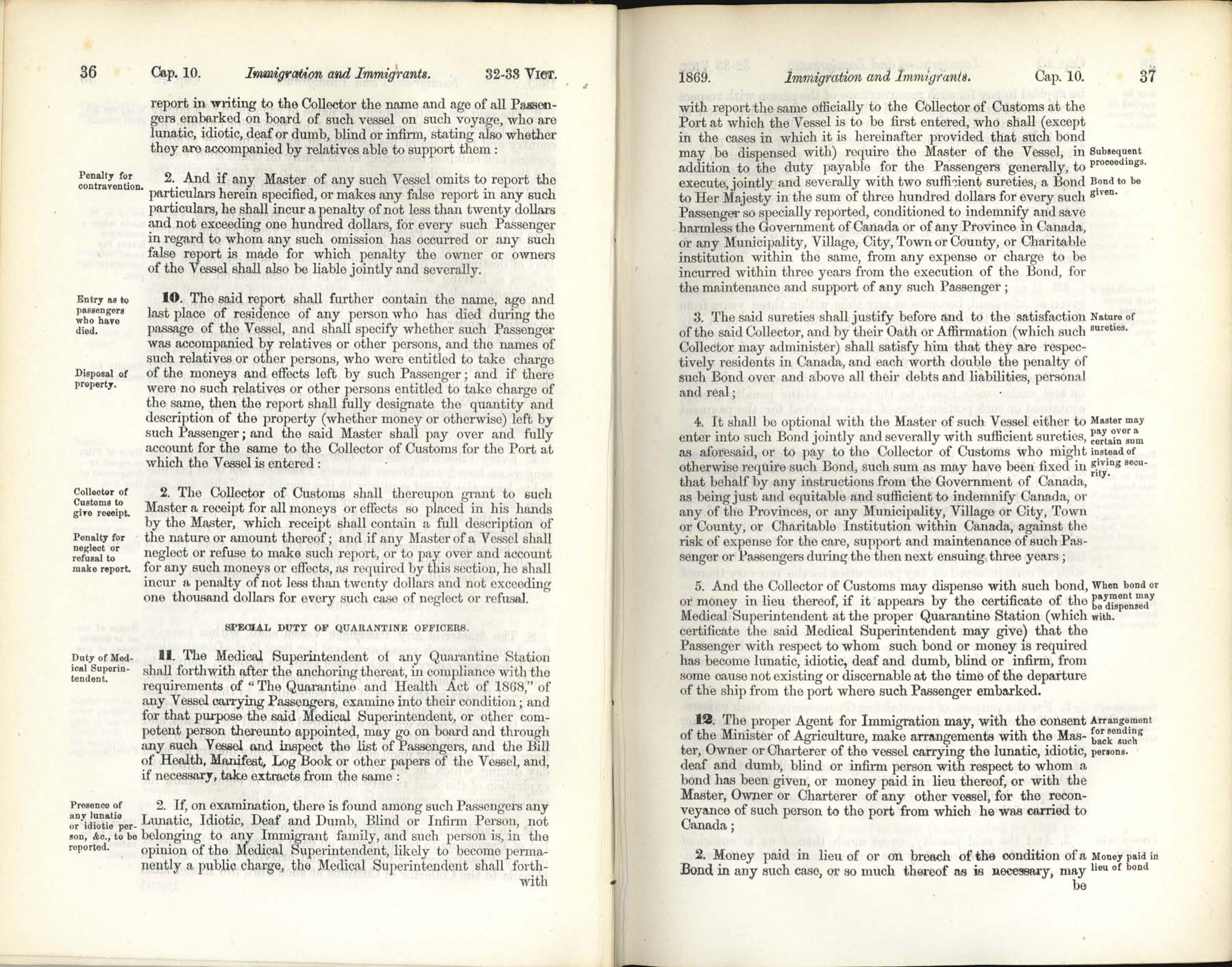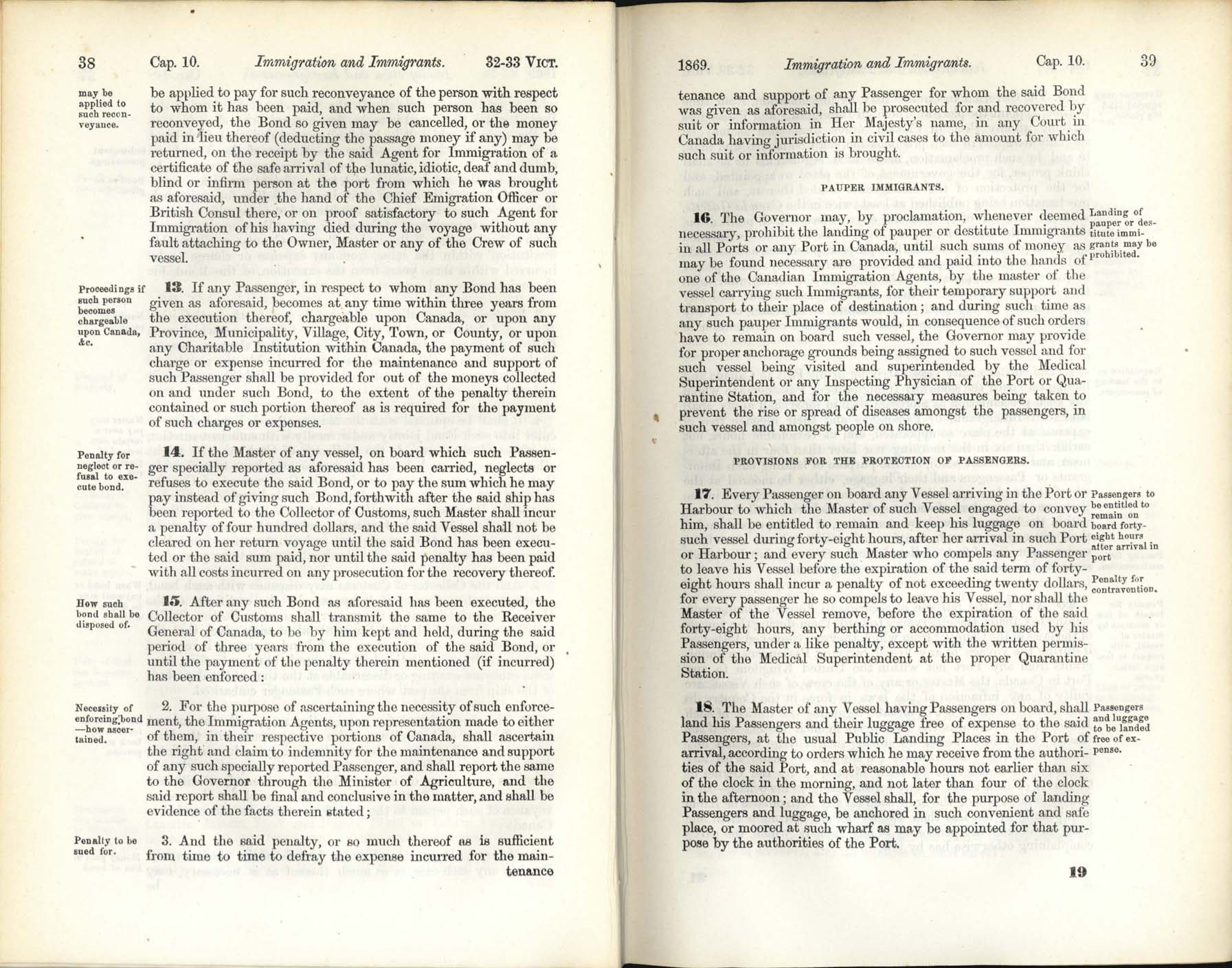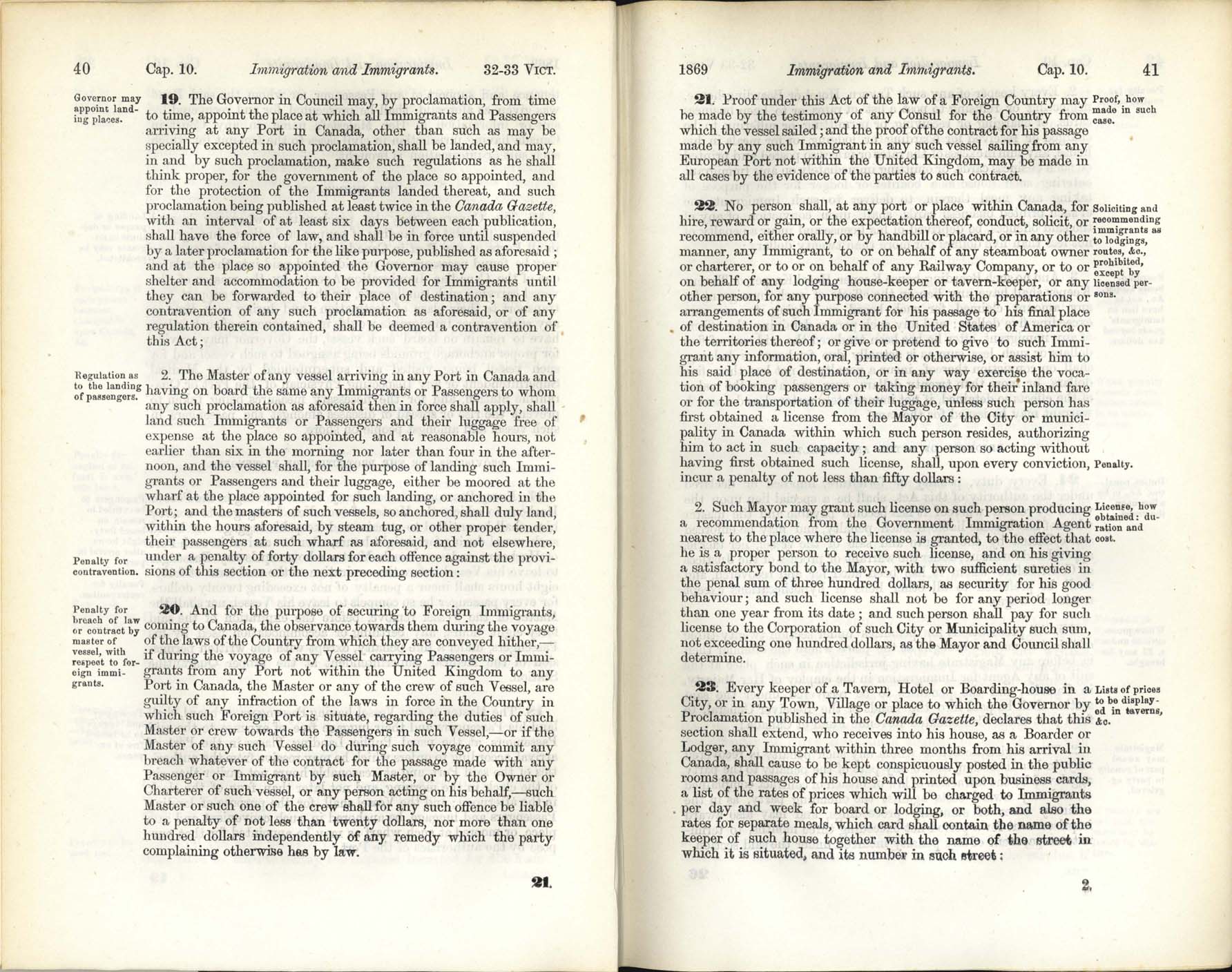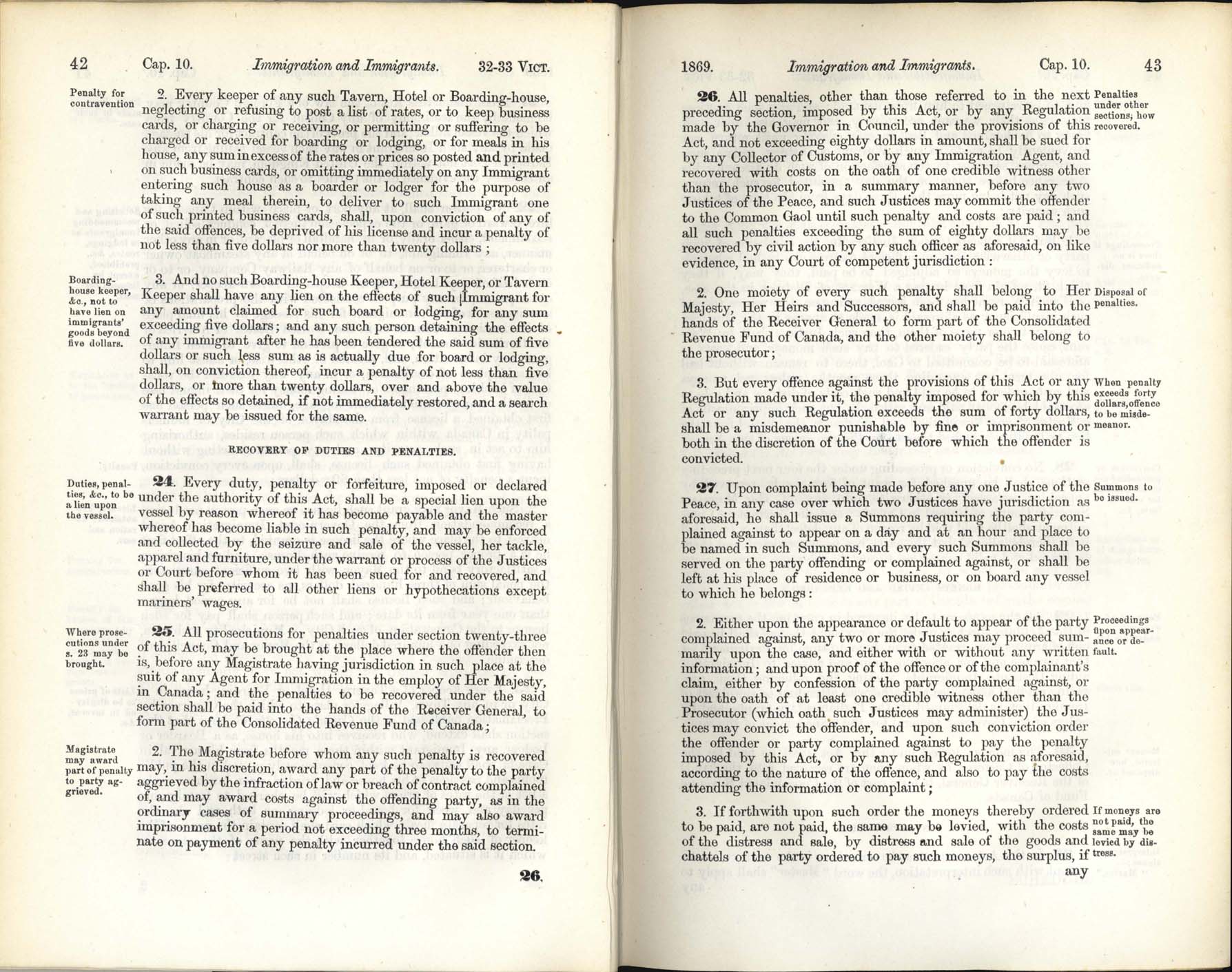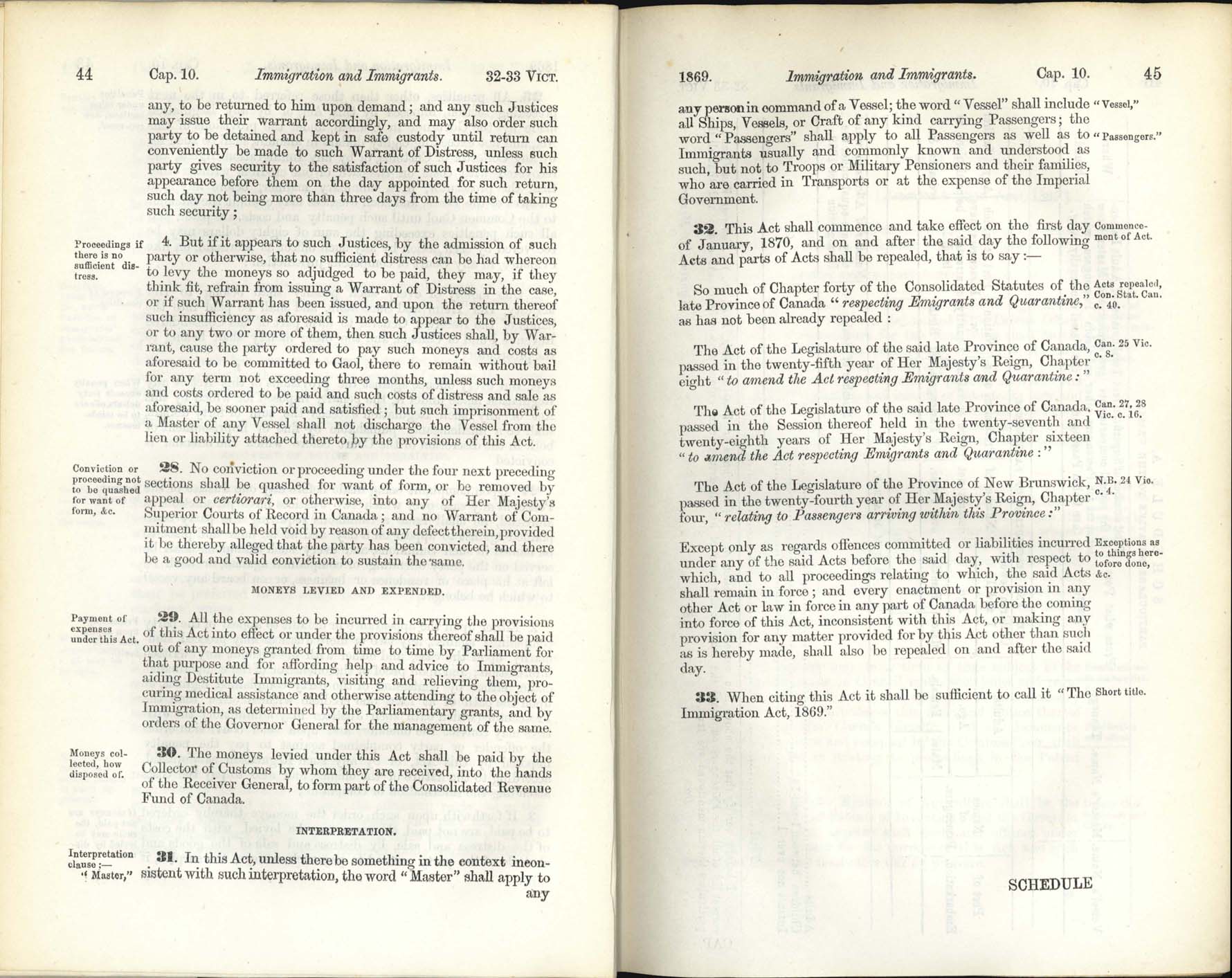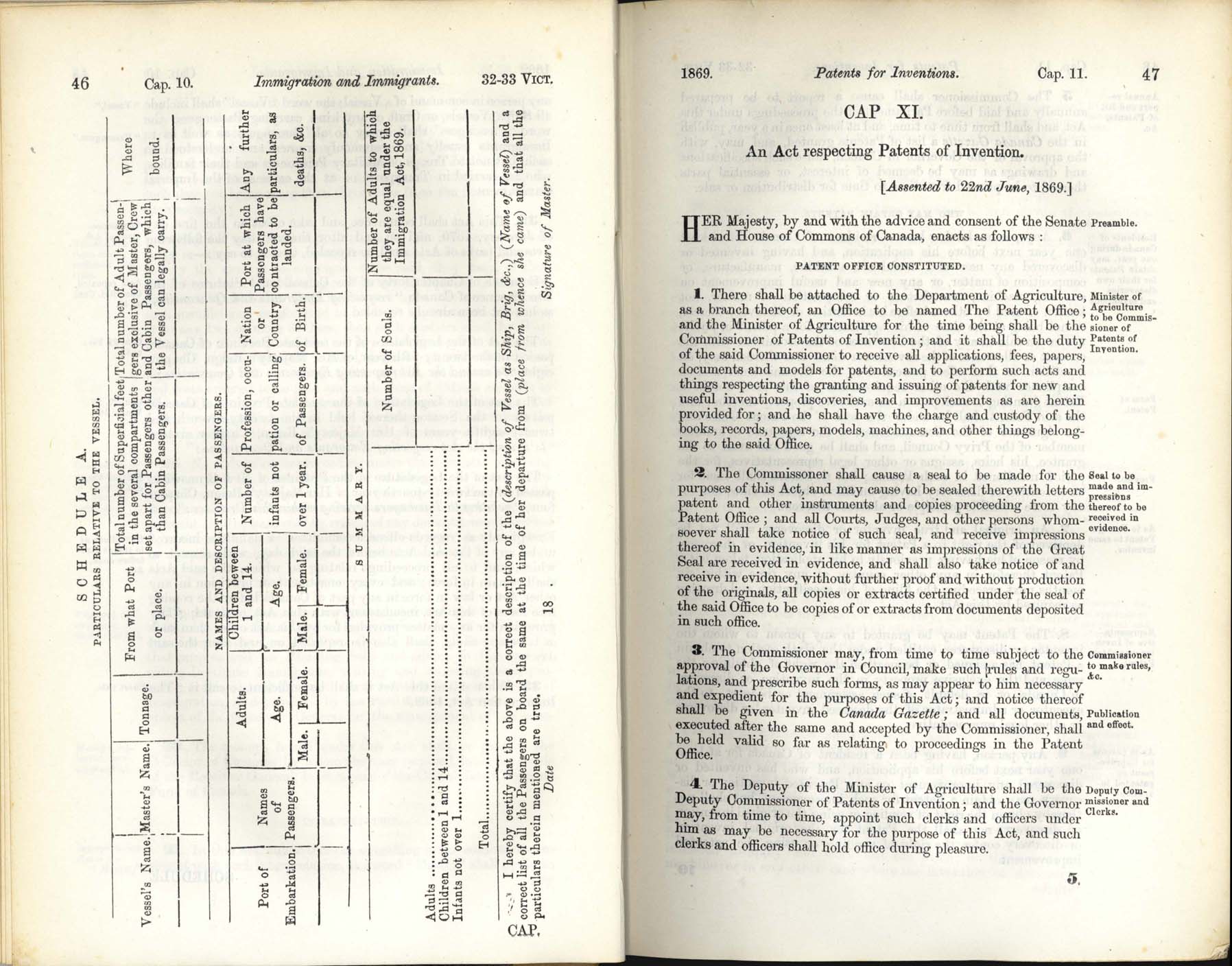Canada’s first immigration act following Confederation contained few restrictions on immigration. The government of Prime Minister John A. Macdonald developed an open immigration policy to encourage the settlement of the West, seeking to enhance access to the region’s natural resources and create a larger market for manufactured goods.[1]
The Immigration Act of 1869 primarily focused on ensuring the safety of immigrants during their passage to Canada and protecting them from exploitation upon their arrival. Conditions of transoceanic travel in the early nineteenth century were appalling; ships were often overcrowded and passengers were not provided with the necessary provisions. Legislation passed by the British Parliament in the middle of the century enhanced the safety of ocean travel, although many ship owners found ways to circumvent the regulations.[2]
To guard against overcrowding, Canada’s Immigration Act of 1869 limited the number of passengers aboard each vessel to one person for every two tons of the ship’s total weight. Ship captains were required to provide customs officials with accurate lists of the ship’s passengers and additionally document the medical condition of each person on board. A penalty was charged for every person listed as “lunatic, idiotic, deaf or dumb, blind or infirm,” with the immigration agent authorized to order such individuals returned to their port of departure. The governor-in-council (i.e. federal cabinet) also reserved the right to prohibit the entry of paupers and destitute immigrants.
In an effort to prevent the exploitation of new immigrants, the act outlined specific procedures for their arrival at Canadian ports. Ship captains were required to land passengers at reasonable hours, offload luggage free of charge and allow passengers to remain on board for 48 hours after arrival. Businesses offering lodging and transportation services to newly arrived immigrants had to obtain a special license from the government and clearly post their rates.
Although the Immigration Act contained few restrictions, large-scale immigration failed to become a reality. During the first three decades of Confederation, the rate of emigration remained well above the rate of immigration.[3]
Library and Archives Canada. Statutes of Canada. An Act Respecting Immigration and Immigrants, 1869. Ottawa: SC 32-33 Victoria, Chapter 10.
- Ninette Kelley and Michael Trebilcock, The Making of the Mosaic: A History of Canadian Immigration Policy (Toronto: University of Toronto Press, 1998), 62.
- Kelley and Trebilcock, 62, 83.
- Reg Whitaker, Canadian Immigration Policy since Confederation (Ottawa: Canadian Historical Association, 1991), 4.
